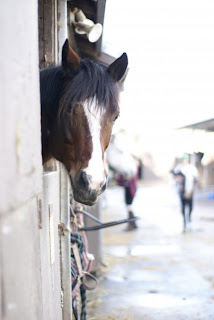Charles Harris also known as ‘Teenie Harris’ or ‘One Shot’ was a photographer, who wasn’t like other people of his time. There were many much more famous photographers during his time such as James Van Der Zee and Gordon Parks, who were known for their portraits, and photojournalism. Teenie was different because he was not very popular or well known until after his death, in fact his work rarely made it out of Pittsburgh, his home town while he was alive. It was after his death, that he became more recognized along with the other photographers during his era with people outside of Pittsburgh.

Charles Harris was born in 1908, in Pittsburgh, PA. Not much is known about his early childhood with the exception that he only went until 8th grade, quitting because he was “tired of it” and he told an interviewer after he had retired that is parent’s didn’t care much about him, so he could basically get away with anything. In1930, he purchased his first camera and worked freelance in Washington D.C. When he first told his brother that he wanted to be a photographer, he told him that he couldn’t make any money doing that, so for the rest of his life as a photographer he tried to prove him wrong. Unfortunately, his brother did not live to see the day his own brother made himself a decent living. For the rest of his career Charles worked for the Pittsburgh Courier, until his retirement.

Charles Harris is best known, especially in Pittsburgh as “Teenie” Harris, not Charles. Charles was always short, and his cousin named him “Teenie Little Lover” but when he got older, they just called him Teenie. He also had another nickname; he got from the Mayor of Pittsburgh at the time. While many photographers were taking many photos, Charles only took one and then walked away, he tended to do this in most of his photo shoots. The mayor took note of his “strange” behavior, and infamously named him “One-Shot”, he also says though that it has another meaning, saying that he took many one shots of life, capturing a entire story and entire lives, in one photograph. Charles “One-Shot Teenie” Harris became most famous after his death, having his work showed to people and places outside of Pittsburgh.

Charles was not a glamorous photographer. He didn’t have fancy art studios, or famous models to work with, he just worked for a newspaper, and happened to be really good at what he was doing. All of his images for the Pittsburgh Courier were showcasing African-American life (from 1931-1975). One person he said he really learned from was Johnny Taylor, another working-class photographer at the newspaper. The one thing that Charles always asked his models to do while his was taking pictures of them was to not look at the camera ever. He hated when people looked into the camera, and he used to say it ruined the photo, took away all of it’s “emotional depth”. He really showed people that you can do a lot with nothing and you don’t have to be rich, or have an expensive camera to take a good photo.


Gordon Parks was another photographer during Teenie’s time but his photos were different than Teenie’s. Gordon’s photos were portraits, and his style was a bit more glamorous since he did a lot of fashion photography. Another photographer during his time was James Van Der Zee. James was also a portrait photography, but not as glamorous as Gordon. Neither of these photographers quite did what Teenie despite being more famous and well known.
Charles “Teenie” Harris lived for 90 years and died in 1998. In 2001, The Carnegie Museum of Art purchased his collection and it is still on display. Since his death the book One Shot: The Life and Work of Teenie Harris. By the end of his life, everyone called him “Teenie” and even on his gravestone, it reads Charles “Teenie” Harris. His work influenced many because he had managed to get some of the most positive images out of people in a time when that was very rare.


















